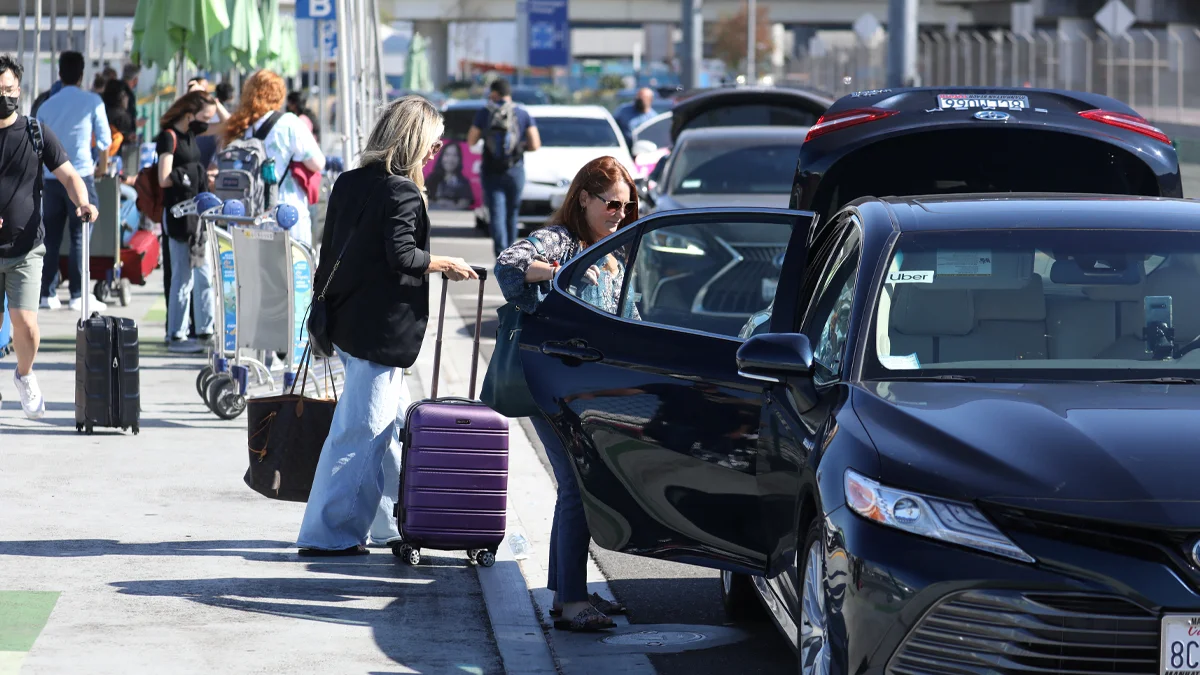Necessary Always Active
Necessary cookies are required to enable the basic features of this site, such as providing secure log-in or adjusting your consent preferences. These cookies do not store any personally identifiable data.
|
||||||
|
||||||
|
||||||
|

Tesla’s Full Self-Driving (FSD) software is already gaining traction among ride-hailing cars like Uber Lyft robotaxis. On October 3, 2024, Reuters reported that 11 ride-hail drivers who use the FSD software said the software is already proliferating the robotaxis space.
Many ride-hailing drivers say the software has some limitations. However, it helps them reduce stress so they can work extra hours and make more money.
Elon Musk has already advanced plans to launch Tesla robotaxi on October 10. For a long time, the Tesla CEO has contemplated building a network of self-driving vehicles run by the company.
As more drivers embrace Tesla’s FSD software, Uber-Lyft drivers safety concerns remain rife. In April 2024, a self-driving Tesla vehicle that was ferrying an Uber passenger rammed into an SUV at a Las Vegas intersection.
The Tesla robotaxi accident raised fresh concerns over the rising exploitation of gray regulatory areas in US cities and risking the lives of passengers. Although tests of robotaxis with human backup drivers are heavily regulated, federal and state authorities have placed responsibility for the vehicles on drivers. This responsibility stands whether the drivers use driver-assist software or not.
General Motors’ Cruise robotaxis and Alphabet’s Waymo robotaxis use test versions of driver-assist software, which is categorized as fully autonomous. Tesla’s FSD software is categorized as one that requires driver oversight.
In the April 2024 Uber Tesla accident, driver- Justin Yoon and his passenger got injured. They were treated in hospital for minor injuries and their vehicle totaled. The police report showed he was at fault because he failed to yield the right of way. Yoon said a vehicle obstructed his view when an SUV emerged. However, Tesla’s FSD software did not slow his vehicle down even after the SUV became visible.
“It’s not perfect, it’ll make mistakes, it will probably continue to make mistakes,” Yoon said.
Other drivers have highlighted critical limitations of the FSD software that include sudden braking and acceleration. Some drivers said they don’t use the software in complex environments or situations like airport pickups, construction areas, and navigating parking lots.
“I do use it, but I’m not completely comfortable with it,” Sergio Avedian, a Los Angeles ride-hail driver in Los Angeles “The Rideshare Guy” YouTube channel contributor.
Avedian says he does not use the software when carrying passengers. He estimates that about 40% of drivers across the US regularly use FSD. These estimates are based on the conversations he has with drivers through the YouTube channel, which currently has about 200,000 subscribers.
Reuters reached out to ride-hailing giants, Lyft and Uber with questions about the FSD software. Both Lyft and Uber said drivers have the responsibility to ensure safety when using the software.
Uber, whose passenger was involved in the April 2024 accident, highlighted its community guidelines saying, ‘drivers are expected to maintain an environment that makes riders feel safe; even if driving practices don’t violate the law.’
The ride-hailing company also highlighted Tesla instructions which require drivers who use FSD software to keep their hands on the steering wheel at all times and be ready to take over vehicle control any time.
The federal government has categorized FSD software as partial automation requiring the full engagement of drivers in vehicle steering, braking, and acceleration. Following the fatal accidents, the software has been placed under legal and regulatory scrutiny. However, Uber, Lyft, and Tesla robotaxis do not break any law for using the FSD software.
“Ride-share services allow for the use of these partial automation systems in commercial settings, and that is something that should be facing significant scrutiny,” Jake Foose, an Analyst at Guidehouse Insights said.
Recently, Uber configured its systems to send details on passenger destinations to Tesla’s navigation system dashboard. However, Tesla, Lyft, and Uber have no way of determining whether drivers work for the ride-hailing companies and use FSD. Regulation of the technology in ride-hailing will require investigating how ride-hail drivers use driver-assist technologies like FSD and Waymo’s generation 6 technology, to address Tesla robotaxis safety concerns.
Early this month, Tesla maintained its plan to launch FSD software in Europe and China. The ESD is currently awaiting regulatory approval, which Elon Musk said is likely to happen by the end of this year.